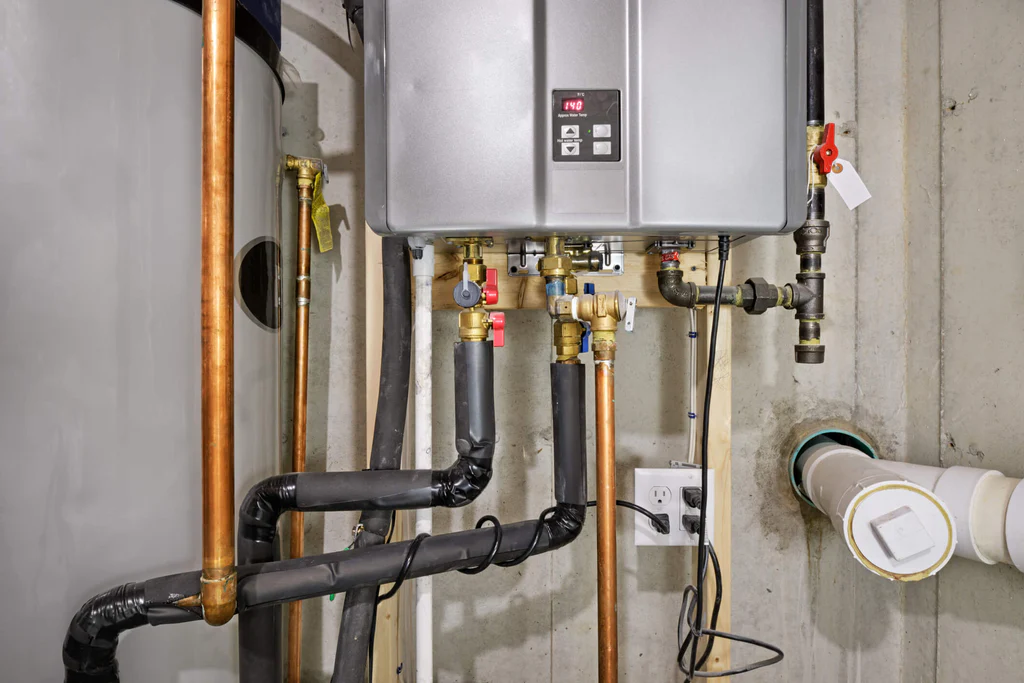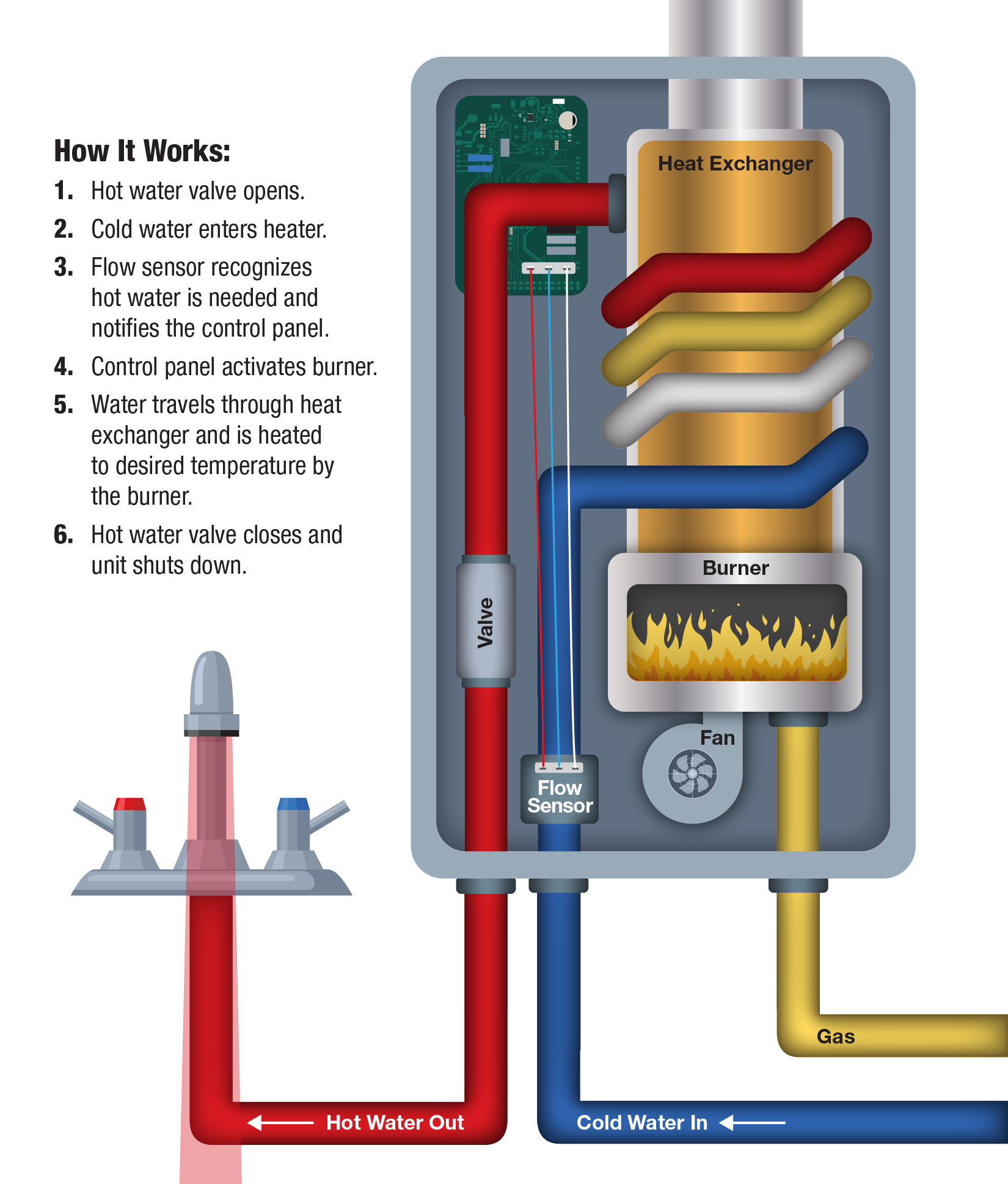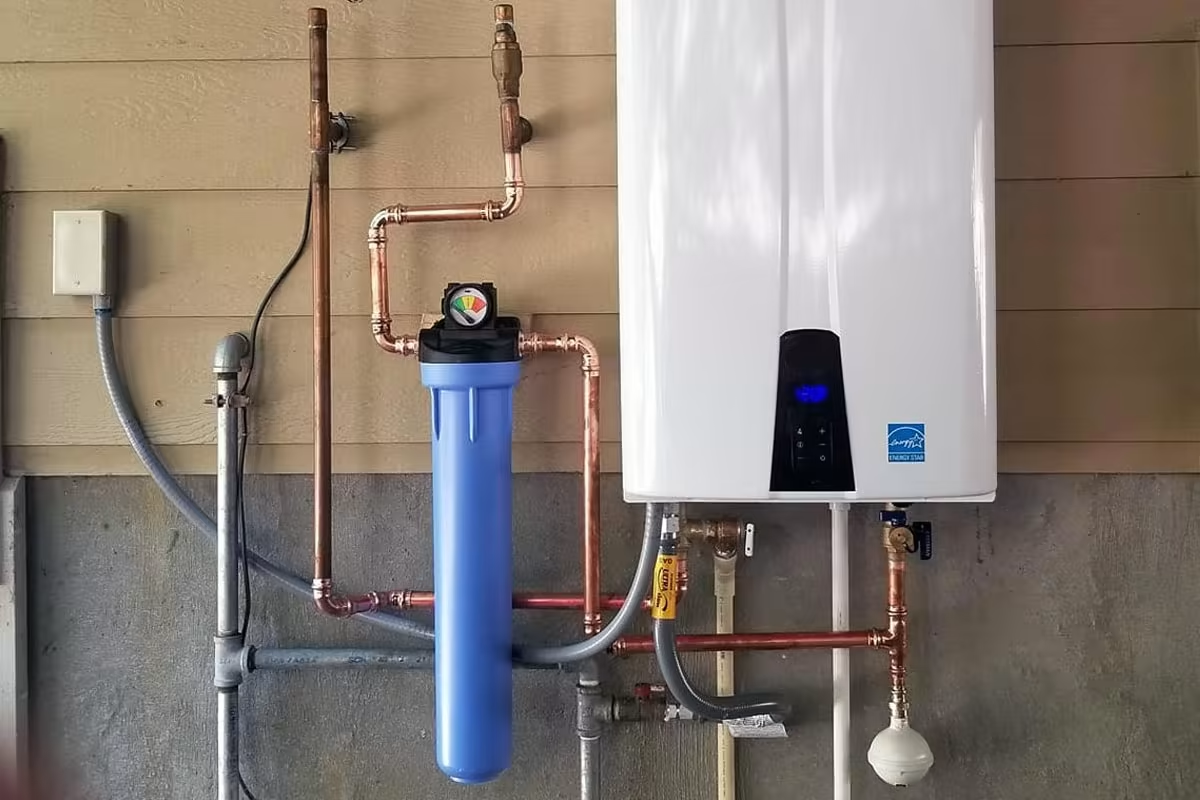Tankless water heaters are a game-changer for many households, providing endless hot water on demand, increasing energy efficiency, and taking up less space than traditional tank systems. However, like any appliance, tankless water heaters can develop problems over time, leaving homeowners frustrated with cold water or inconsistent performance. Whether you’re facing no hot water, fluctuating temperatures, or strange error codes, this guide will walk you through common tankless water heater problems and how to fix them.

How Do Tankless Water Heaters Work?
Unlike traditional water heaters that store hot water in a tank, tankless water heaters heat water only when you need it. Cold water flows through a heat exchanger, which is powered by either gas or electricity, and instantly heats the water before it’s delivered to your faucet or shower. The system offers great efficiency, but it also means that your water heater is working harder every time you turn on the tap, which can lead to some common issues over time.
Learn more about tankless water heaters and energy efficiency at Energy Star.
1. No Hot Water from Your Tankless Water Heater
This is the most common issue people experience with their tankless water heater. If you’ve turned on your faucet expecting hot water only to be greeted by cold water, don’t panic. The problem can usually be traced to one of a few simple causes:
Causes of No Hot Water
- Power Supply Disruption: Tankless water heaters require a consistent power supply to function. If the unit isn’t getting gas or electricity, it won’t be able to heat your water.
- System Overload: Trying to run too many appliances that use hot water at the same time can overload your system, especially if you’re running showers, dishwashers, and washing machines all at once.
- Cold Weather Issues: In freezing weather, the water pipes leading to your tankless system might freeze, blocking the flow of water altogether.
How to Fix No Hot Water Issues
- Check the power supply: Make sure your unit is connected to electricity or gas, and reset it if necessary.
- Reduce the load: Turn off one or more appliances to reduce the demand on your tankless water heater and restore the flow of hot water.
- Thaw frozen pipes: Insulate pipes and use a space heater to thaw frozen areas if necessary.
If these fixes don’t solve the problem, it may be time to contact a professional plumber. For more help, see this guide from Paschal Air, Plumbing & Electric.
2. Water Temperature Fluctuations

Inconsistent water temperature is another common issue with tankless water heaters. You might notice that your water gets too hot or too cold, making showers and household chores uncomfortable. Here’s why this happens and what you can do:
Common Causes of Water Temperature Problems
- Thermostat Settings: If the temperature on your unit’s thermostat is set too high or too low, it can cause water to fluctuate between extremes.
- Mineral Buildup: Hard water can cause mineral deposits to clog your system, affecting both water pressure and temperature.
- System Overload: Running too many taps or appliances that require hot water can cause the water temperature to drop.
Fixing Temperature Fluctuations
- Adjust the thermostat to a more moderate temperature. The ideal setting for most homes is around 120°F (49°C).
- Flush your system to remove mineral buildup. This is especially important in homes with hard water. For long-term prevention, consider installing a water softener.
- Don’t overload the system. Try not to run too many hot water outlets at once. If you regularly need more hot water, consider installing multiple units or upgrading to a more powerful system.
3. Ignition Failure

If your tankless water heater won’t ignite, you’ll be left with cold water. Ignition failure is one of the more common issues with gas-powered systems, but it can also affect electric units.
Reasons for Ignition Failure
- Gas Supply Issues: For gas-powered units, an insufficient gas supply or a closed gas valve can prevent ignition.
- Clogged Vents: Blocked intake or exhaust vents can stop your system from igniting.
- Dirty Burners: Burners that are covered in dust or dirt may struggle to ignite.
Fixing Ignition Failure
- Make sure the gas supply is turned on and functioning properly. If you’re using propane, ensure your tank has enough fuel.
- Check and clean the vents to remove any blockages.
- Clean the burners if they’re dirty or clogged.
Most tankless water heaters will display an error code if there’s an ignition issue. Refer to your system’s manual to understand these codes, or call a professional for assistance if you can’t resolve the issue on your own.
4. Low Water Pressure

Low water pressure can make your tankless water heater less effective. Here are the common causes and fixes:
What Causes Low Water Pressure?
- Clogged Filters: Most tankless water heaters have filters that can become clogged over time.
- Mineral Buildup: Hard water can also cause scaling, which restricts water flow.
How to Fix Low Water Pressure
- Clean or replace your water filters to ensure proper flow.
- Flush the system regularly to prevent mineral scaling from reducing pressure.
5. Error Codes on Tankless Water Heaters
Tankless water heaters often have digital displays that show error codes when something goes wrong. These codes can point to problems with the ignition, venting, or overheating. Here’s how to interpret and fix them:
How to Troubleshoot Error Codes
- Consult your unit’s manual to identify the meaning of specific error codes. Each manufacturer uses different codes, so check the manual for guidance.
- Reset the system and see if the error code clears. If it persists, you may need to call a professional for further diagnosis.
6. Water is Too Hot
While many homeowners struggle with no hot water, others might find their tankless water heater is producing water that’s too hot to handle. This is typically due to:
Why Water Gets Too Hot
- Thermostat is Set Too High: The most common reason for scalding hot water is that the thermostat is set too high.
- Flow Issues: Reduced water flow due to blockages can cause water to heat up too much before reaching your tap.
Fixing Excessively Hot Water
- Turn down the thermostat to a safe temperature—around 120°F is ideal for most households.
- Clear any blockages in the water lines to restore proper flow and prevent overheating.
7. Mineral Buildup in the Water Heater

Homes with hard water may notice a gradual decline in water quality and flow due to mineral buildup in their tankless system. Over time, minerals like calcium and magnesium can block water flow and affect the efficiency of your water heater.
How to Deal with Mineral Buildup
- Flush the system annually to remove scale and improve performance.
- Install a water softener to reduce the effects of hard water.
Conclusion: Tankless Water Heater Troubleshooting
Tankless water heaters offer numerous benefits, but they’re not immune to problems. From no hot water to ignition failure and temperature fluctuations, these systems require regular maintenance and occasional troubleshooting. By following the tips outlined in this guide, you can fix common issues and keep your system running smoothly.
If you’re experiencing persistent issues with your tankless water heater, it may be time to contact a professional.
FAQ
| Question | Answer |
|---|---|
| Why is my tankless water heater not producing hot water? | This could be due to power supply issues, frozen pipes, or system overload. Make sure the power is on and reduce the load on the unit. |
| How often should I flush my tankless water heater? | It’s recommended to flush your system once a year to prevent mineral buildup, especially if you live in an area with hard water. |
| What should I do if I see an error code on my tankless water heater? | Refer to your unit’s manual to identify the error code and reset the system. If the error persists, contact a professional for help. |

